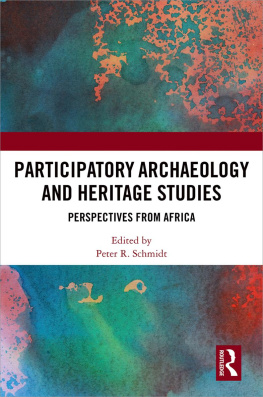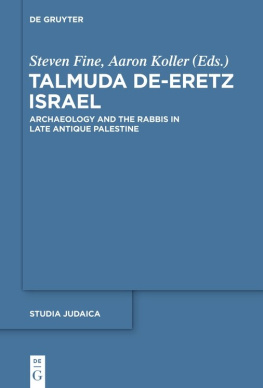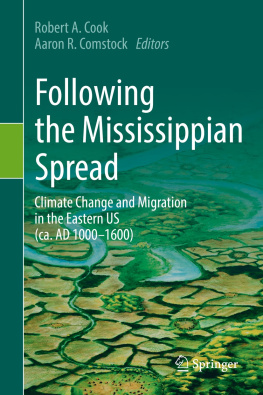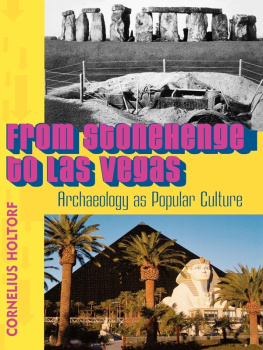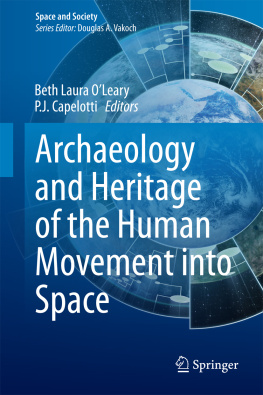ARCHAEOLOGY OF THE MISSISSIPPIAN CULTURE
RESEARCH GUIDES TO ANCIENT CIVILIZATIONS
VOLUME 6
ROUTLEDGE REFERENCE LIBRARY OF THE HUMANITIES
VOLUME 1457
RESEARCH GUIDES TO ANCIENT CIVILIZATIONS
JOHN M. WEEKS, Series Editor
MAYA CIVILIZATION
John M. Weeks
GREAT ZIMBABWE
The Iron Age in South Central Africa
Joseph C. Vogel
ANCIENT CARIBBEAN
John M. Weeks and Peter J. Ferbel
ARCHAEOLOGY OF THE MISSISSIPPIAN CULTURE
A Research Guide
Peter N. Peregrine
MYCENAEAN CIVILIZATION
A Research Guide
Bryan Feuer
Published by Routledge
270 Madison Ave, New York NY 10016
2 Park Square, Milton Park, Abingdon, Oxon, OX14 4RN
Transferred to Digital Printing 2010
Copyright 1996 by Peter N. Peregrine
All rights reserved
Library of Congress Cataloging-in-Publication Data
Peregrine, Peter N. (Peter Neal), 1963-
Archaeology of the Mississippian culture: a research guide / Peter N. Peregrine.
p. cm. (Research guides to ancient civilizations ; v. 6)
(Routledge reference library of the humanities; vol. 1457)
Includes indexes.
ISBN 0-8153-0336-X (alk. paper)
1. Mississippian cultureBibliography. I. Title. II. Series. III. Series: Routledge reference library of the humanities ; vol. 1457.
Z1208.M5P47 1996
[E99.M6815]
016.976201dc20
95-19358
CIP
Publishers Note
The publisher has gone to great lengths to ensure the quality of this reprint but points out that some imperfections in the original may be apparent.
SERIES EDITORS PREFACE
In recent years there has been a general increase of scholarly and popular interest in the study of ancient civilizations. This is due in part to the dramatic coverage of the archaeological profession in popular film and television, and extensive journalistic reporting of spectacular new finds from all parts of the world. Yet, because archaeologists and other scholars tend to approach their study of ancient peoples and places almost exclusively from their own disciplinary perspectives, there has long been a lack of general bibliographic and other research resources available for the nonspecialist. This series is intended to fill that need.
Volumes in the Research Guides to Ancient Civilizations series are designed to introduce the general reader, student, and non-specialist to the study of various ancient civilizations. Each volume is devoted to a specific archaeological culture (for example, the ancient Maya of southern Mexico) or cultural region (for example, ancient Anatolia). Each seeks to achieve, by use of careful selectivity and a critical assessment of the literature, an expression of a particular civilization and an appreciation of its achievements to guide the reader toward an understanding of its unique importance.
Individual volumes are written by authorities in the field and provide a selective, annotated guide to the readily available literature (books, journal articles, essays in edited volumes, dissertations, etc.) in relevant languages. Each volume will also include an introductory essay that reviews appropriate literature for the field, suggests areas for future research, and describes the scope and organization of the work. Extensive indexing for personal names, subjects, and other areas as appropriate, is included as well.
The keynote of the Research Guides to Ancient Civilizations series is to provide, using a uniform format, an interpretation of each civilization that will express its culture and place in the world, and the qualities and background that make it unique. Forthcoming works will consider subjects as diverse as the Urartu kingdom of eastern Turkey, the Nile Valley, Lower Central America, and Mohenjo Daro and the Indus Valley civilizations. Other projected volumes will cover the Hohokam culture of the American Southwest, the Phoenicians of the eastern Mediterranean, the Mixtecs of southern Mexico, and the Mesopotamian civilizations among others. Still others are in the planning stage.
Archaeology of the Mississippian Culture, the sixth volume in the Research Guides to Ancient Civilizations series, considers archaeological cultures that developed in central North America between A D. 800 and 1000. The Mississippian tradition was based in part on the introduction of new strains of maize and beans from Mesoamerica. These important protein supplements released populations from density constraints based on the availability of wild animal protein sources. The Mississippian ecosystem focused on the rich and productive bottomlands of the major rivers of interior North America, and populations may have reached densities as high as 200 persons per square kilometer in some areas.
The principal Mississippian settlements developed in the Illinois and upper Mississippi valley, west along the Missouri to Kansas City, in the lower Wabash and in the Ohio Valley, and populations in southern Ohio, northern Kentucky, and West Virginia adopted many of the Mississippian cultural traits. Mississippian expansion sometimes involved the colonization of prime land by societies having clear adaptive advantages over earlier residents. Regional variants developed throughout eastern North America.
The complexes of the Mississippi River and its major tributaries had the largest settlements, mounds, and populations. They qualified as true towns, and often contained temple mounds and other urban features showing Mesoamerican influence. Intensive riverine horticulture supported these centers, principally in the rich alluvial valleys of the Mississippi, Ohio, Tennessee, Arkansas, and Red Rivers and their larger tributaries.
Mississippian towns typically contained from one to 20 flat-topped mounds that served as platforms for temples or other public structures. The sites were often stockaded, with residences both inside and outside the stockade lines.
Horticulture in the peripheral fields was intensive. Unlike Mexico and the Southwest, Mississippian farmers did not manage water, either through irrigation or field drainage. Instead Mississippian farmers competed for the best alluvial land. The evidence for warfare is strong for an area rich in productive land. The stringent land requirements of the Mississippians probably led to competition for the best fields even in areas where less productive alternatives were available.
Mississippian societies were apparently ranked societies with permanent offices. Leadership in these chiefdoms was probably hereditary. Smaller communities were political satellites of larger and politically dominant centralized communities with numerous and elaborate public structures (e.g., Cahokia in the east St. Louis area and Moundville in west-central Alabama). There were probably two or more levels of superordinate political offices at these centers.
Portable Mississippian artifacts include polished stone axes, bowls, and pipes. Pottery innovation includes a series of new forms such as trophy-head vessels, long-necked water jugs, round bottomed pots, and other forms suggesting Mexican influences. Later Mississippian sites indicate new decorative techniques such as bichrome and negative resist painting.




